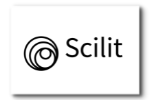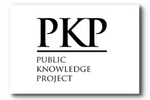Human health implications of the protoprotector 4-methylbenzylidene camphor (4MBC): a systematic review of endocrine effects
DOI:
https://doi.org/10.55892/jrg.v8i18.2018Keywords:
Sun protection factor, Endocrine disruptors, Hazardous substancesAbstract
4-Methylbenzylidene Camphor (4MBC) is a UV filter that protects humans against sun exposure, helping to prevent skin cancer. However, it has properties that interfere with the endocrine system and other organic systems that are still somewhat unclear. The lack of systematic reviews on the proposed topic is one of the gaps in the literature, as they could contribute to a better analysis of previous studies and probable correlations with endocrine alterations. The study in question aims to develop a literature review for the current understanding of the endocrine effects of 4MBC discovered so far. A structured literature search approach will be used to identify eligible studies related to the effect of 4MBC on the endocrine system. The databases used will be Scielo, PubMed, Oxford Academic and Wiley Online Library. The pre-established descriptors are: 4-methylbenzylidene camphor (4MBC), sunscreens and endocrine disruptors. The exclusion criteria for literature and systematic reviews will be: case studies; book chapters; and overlapping articles. The information and data from the listed articles will be screened and organized by theme for later analysis. It is important to emphasize that the report of this systematic review will follow the recommendations of the PRISMA 2020 Statement (Preferred Reporting Items for Systematic Reviews and Meta-Analyses), which involves a checklist containing 27 items that must be followed in order to obtain a more transparent, complete, and accurate review, thus facilitating evidence-based decision-making. Regarding the results, it is expected that, with the execution of this project, the relationship between 4-methylbenzylidene camphor and the effects on the endocrine system will be elucidated. The intention is to contribute to the reduction of such negative and unfavorable occurrences caused by the use of sunscreens that contain a toxic substance in their composition.
Downloads
References
AIRES, M. de M. Margarida de Mello Aires. Fisiologia /. [s. l.]: Guanabara Koogan, 2018. Disponível em: https://research.ebsco.com/linkprocessor/plink?id=6e147193-03d1-3366-acd8-166120a4c5b2. Acesso em: 29 mar. 2024
AO, J. et al. Organic UV filters exposure induces the production of inflammatory cytokines in human macrophages. Science of The Total Environment, v. 635, p. 926–935, set. 2018.
CAROU M.E. et al. Impact of the UV-B filter 4-(Methylbenzylidene)-camphor (4-MBC) during prenatal development in the neuroendocrine regulation of gonadal axis in male and female adult rats. Environmental toxicology and pharmacology vol. 27, p. 3, 2009.
GUYTON, A. C. Tratado de fisiologia médica / Arthur C. Guyton, John Edward Hall, Michael E. Hall; tradução: Adriana Paulino do Nascimento... [et al.]. [s. l.]: GEN Guanabara Koogan, 2021. Disponível em: https://research.ebsco.com/linkprocessor/plink?id=e9b74ab1-d763-389a-8c6a-3966096f6dea. Acesso em: 29 mar. 2024.
JANJUA, Nadeem Rezaq et al. “Systemic absorption of the sunscreens benzophenone-3, octyl-methoxycinnamate, and 3-(4-methyl-benzylidene) camphor after whole-body topical application and reproductive hormone levels in humans.” The Journal of investigative dermatology vol. 123,1 (2004): 57-61. doi:10.1111/j.0022-202X.2004.22725.x
KUMAR, V. Robbins patologia básica / Vinay Kumar, Abul K. Abbas, Jon C. Aster; tradução: Tatiana Ferreira Robaina... [et al.]. [s. l.]: GEN Guanabara Koogan, 2021. Disponível em: https://research.ebsco.com/linkprocessor/plink?id=44454c24-e238-3bb3-845b-bd1148115f87. Acesso em: 29 mar. 2024.
LAX, C. et al. “The effect of sunscreen 4-methylbenzylidene camphor in different and reproductive models, its bioaccumulation and molecular effects on ligand-receptor interaction, and protein expression.” Basic & clinical pharmacology & toxicology vol. 133, p. 2, 2023.
MENEZES, N. dos S. et al. Avaliação da composição (INCI) de 5 marcas de protetores solares com FPS 60/ Evaluation of the composition (INCI) of 5 brands of sunscreens with FPS 60. Brazilian Journal of Development, [S. l.], v. 7, n. 4, p. 37605–37615, 2021. DOI: 10.34117/bjdv7n4-296. Disponível em: https://ojs.brazilianjournals.com.br/ojs/index.php/BRJD/article/view/28079. Acesso em: 29 mar. 2024.
MUELLER, S. O et al. “Activation of estrogen receptor alpha and ERbeta by 4-methylbenzylidene-camphor in human and rat cells: comparison with phyto- and xenoestrogens.” Toxicology letters vol. 142, p.1-2, 2003.
National Center for Biotechnology Information. PubChem Compound Summary for CID 37563, 4-Methylbenzylidene camphor PubChem, https://pubchem.ncbi.nlm.nih.gov/compound/4-Methylbenzylidene-camphor. Acesso em: 29 mar.2024.
NELSON, D. L. Princípios de bioquímica de Lehninger / David L. Nelson, Michael M. Cox; tradução: Carla Dalmaz... [et al.]. [s. l.]: Artmed, 2022. Disponível em: https://research.ebsco.com/linkprocessor/plink?id=1cadcd04-6619-35a1-aa6a-c9d6a6cd3899. Acesso em: 29 mar. 2024.
QUINTANEIRO, C. et al. “Toxicity effects of the organic UV-filter 4-Methylbenzylidene camphor in zebrafish embryos.” Chemosphere vol. 218 (2019): 273-281. doi:10.1016/j.chemosphere.2018.11.097
RODGERS, K. M. et al. Environmental chemicals and breast cancer: An updated review of epidemiological literature informed by biological mechanisms. Environ. Res. 2018, 160, p. 152–182.
SEIDLOVÁ-WUTTKE, D. et al. Comparison of effects of estradiol (E2) with those of octylmethoxycinnamate (OMC) and 4-methylbenzylidene camphor (4MBC)--2 filters of UV light - on several uterine, vaginal and bone parameters. Toxicol Appl Pharmacol, 2006.
SEIDLOVÁ-WUTTKE, D et al. Comparison of effects of estradiol with those of octylmethoxycinnamate and 4-methylbenzylidene camphor on fat tissue, lipids and pituitary hormones. Toxicol Appl Pharmacol, 2006.
TINWELL, H. et al. Confirmation of uterotrophic activity of 3-(4-methylbenzylidine)camphor in the immature rat. v. 110, n. 5, p. 533–536, 1 maio 2002
VIRTANEN , H. E. et al. Testicular dysgenesis syndrome and the development and occurrence of male reproductive disorders. Toxicol Appl Pharmacol, 2005.
URRY, L. A.; Cain, M. L.; Wasserman, S. A.; Minorsky, P. V.; Reece, J. B. Campbell Biology. 11. ed. Porto Alegre: Artmed, 2017
XIAN, H. et al. 4-Methylbenzylidene camphor triggers estrogenic effects via the brain-liver-gonad axis in zebrafish larvae. Environ Pollut, 2023.
ZIMMERMANN-BELSING, T et al. Circulating leptin and thyroid dysfunction. European Journal of Endocrinology vol. 149, p. 257-27, out. 2003











































